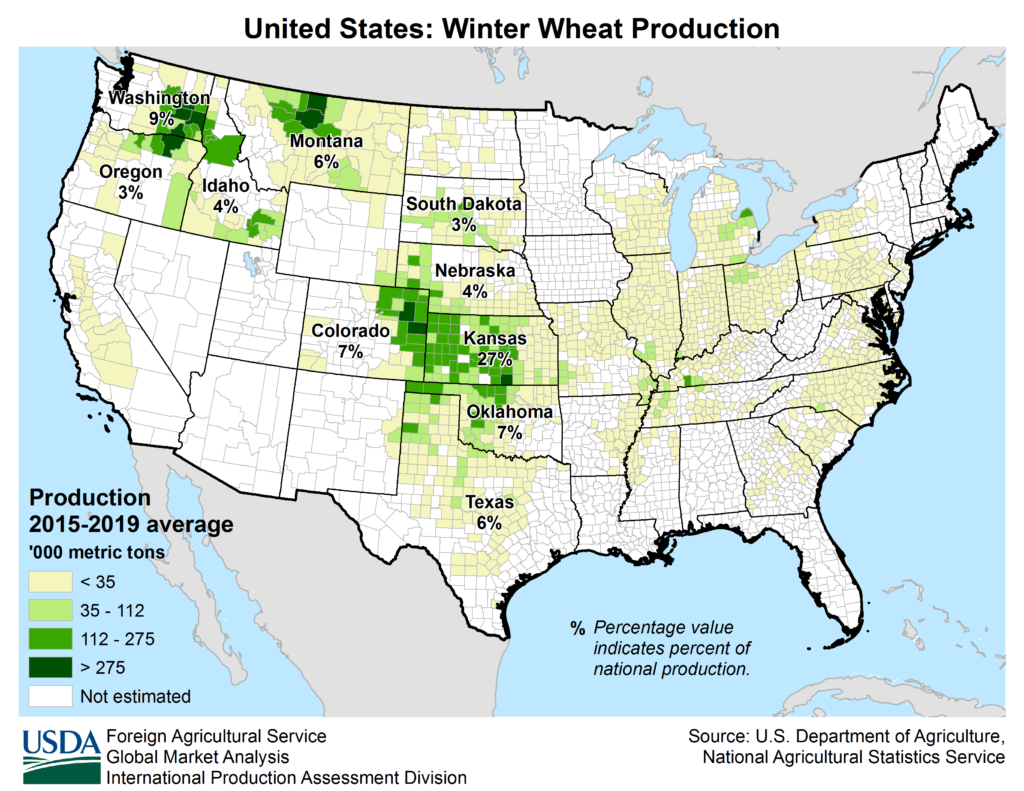Wheat
Wheat is a grass widely cultivated for its seed, a cereal grain which is a worldwide staple food.
Wheat is grown on more land area than any other food crop (220.4 million hectares, 2014).World trade in wheat is greater than for all other crops combined. World production of wheat is the second most-produced cereal after maize.
Wheat is an important source of carbohydrates. Globally, it is the leading source of vegetable protein in human food, having a protein content of about 13%, which is relatively high compared to other major cereals but relatively low in protein quality for supplying essential amino acids. When eaten as the whole grain, wheat is a source of multiple nutrients and dietary fiber


Wheat Futures – Contract Specification
Monthly Symbol
Export Sales
Weekly Historical Data
From USDA: United States Department of Agriculture
The following historical charts covering selected agricultural commodities starting from calendar year 1990 through the current week’s date reflecting weekly exports, accumulated exports, net sales, and outstanding sales for the current marketing year and net sales and outstanding sales for next marketing year are available
Export Sales Weekly Historical Data (USDA)
Wheat Futures Price
COT Report: Wheat – CHICAGO BOARD OF TRADE
USDEUR
Social Sentiment
Sentiment Score
Social Sentiment Trend
Coming Soon
Long-term interest ratesTotal, % per annum, Jan 2007 – Mar 2021
Meteo

Report USDA: Prospecting Plantings
This report contains the expected plantings and last year’s harvest for principal crops and tobacco presented on a state basis. Principal crops are as follows: corn, all wheat, winter wheat, durum wheat, other spring wheat, oats, barley, flaxseed, cotton, rice, all sorghum, sweet potatoes, dry edible beans, soybeans, sunflower, peanuts, sugarbeets, canola, and proso millet.
Wasde Report
The World Agricultural Supply and Demand Estimates (WASDE) is prepared and released by the World Agricultural Outlook Board (WAOB). The report is released monthly, and provides annual forecasts for supply and use of U.S. and world wheat, rice, coarse grains, oilseeds, and cotton. The report also covers U.S. supply and use of sugar, meat, poultry eggs and milk, as well as Mexico’s supply and use of sugar. The WAOB chairs the Interagency Commodity Estimates Committees (ICECs), which include analysts from key USDA agencies who compile and interpret information from USDA and other domestic and foreign sources to produce the report. For more information about the WASDE process and data, visit the WASDE FAQs page.
DISCLAIMER:
The above information was drawn from sources believed to be reliable. Although it is believed that information provided is accurate, no guarantee is made. Thinksmart assumes no responsibility for any errors or omissions.
